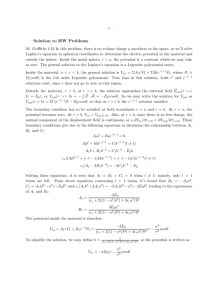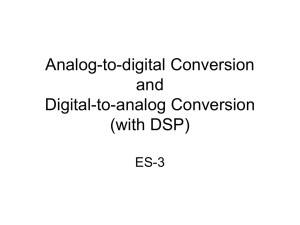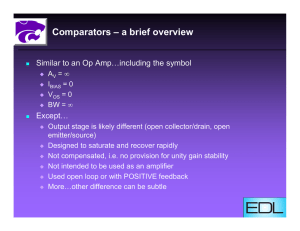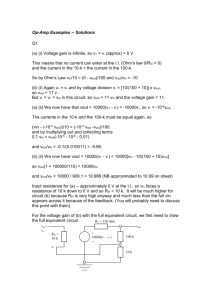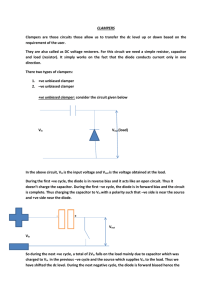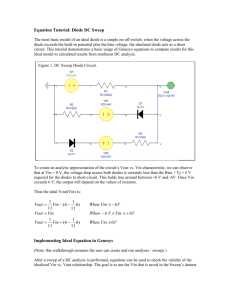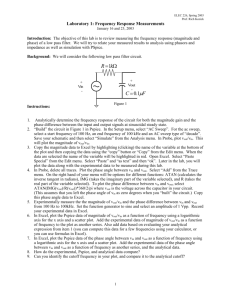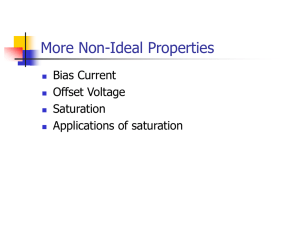Half-Wave Rectifier: Diode Models & Peak Detectors
advertisement
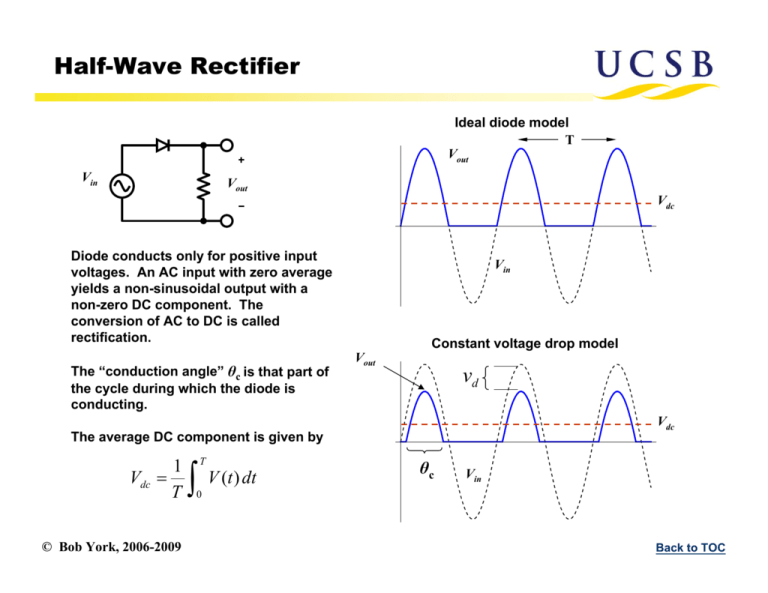
Half-Wave Rectifier Ideal diode model T Vout Vin Vout Vdc Diode conducts only for positive input voltages. An AC input with zero average yields a non-sinusoidal output with a non-zero DC component. The conversion of AC to DC is called rectification. The “conduction angle” θc is that part of the cycle during which the diode is conducting. Vin Vout Constant voltage drop model vd Vdc The average DC component is given by 1 Vdc T © Bob York, 2006-2009 T V (t ) dt θc Vin 0 Back to TOC Half-Wave Rectifier T Assume constant voltage drop model V (t ) vd Vout (t ) in 0 Vin vd otherwise Vdc θc Conduction Angle vd Vm ton sin 1 vd Vm vd V m c 0 1 Vout (t ) dt T toff for vd Vm Ideal rectifier: vd 0 Vm sin t vd dt Vdc ton Vm vd2 c vd 1 2 2 Vm Vm © Bob York, 2006-2009 2vd Vm c Average DC Value T Vin toff sin 1 c (toff ton ) 2sin 1 1 Vdc T vd Vout Vin (t ) Vm sin t Vm 0.318Vm Vm vd vd2 Vdc 1 for vd Vm 2 Vm 2Vm2 Back to TOC Half-Wave Rectifier Ideal diode model Suppose we reverse the diode: now only the negative portion of the input signal passes through Vin Vdc Vout Vin Vout θc Other than the poarity reversal, all math on conduction angle and DC magnitude is identical Vdc vd Constant voltage drop model © Bob York, 2006-2009 Back to TOC Peak Detector Vin © Bob York, 2006-2009 Vout Back to TOC Peak-Detector with Load Any load or leakage path will discharge the capacitor. In this case, the output will depend on how the RC time constant compares with the period of the input signal. Vin C Vout For For C = 100 nF τ=T C = 1000 nF τ = 10 T T = 1 mS τ « T, circuit acts like an ideal rectifier τ » T, circuit acts like an ideal peak detector © Bob York, 2006-2009 τ = 0.1 T 10 kΩ The plots at right consider the various cases for the simple circuit above with a 1kHz, 5V sinusoidal input τ = RC C = 10 nF Back to TOC Peak-Detector as an AM Demodulator Output of detector Amplitude-modulated signal © Bob York, 2006-2009 Back to TOC
